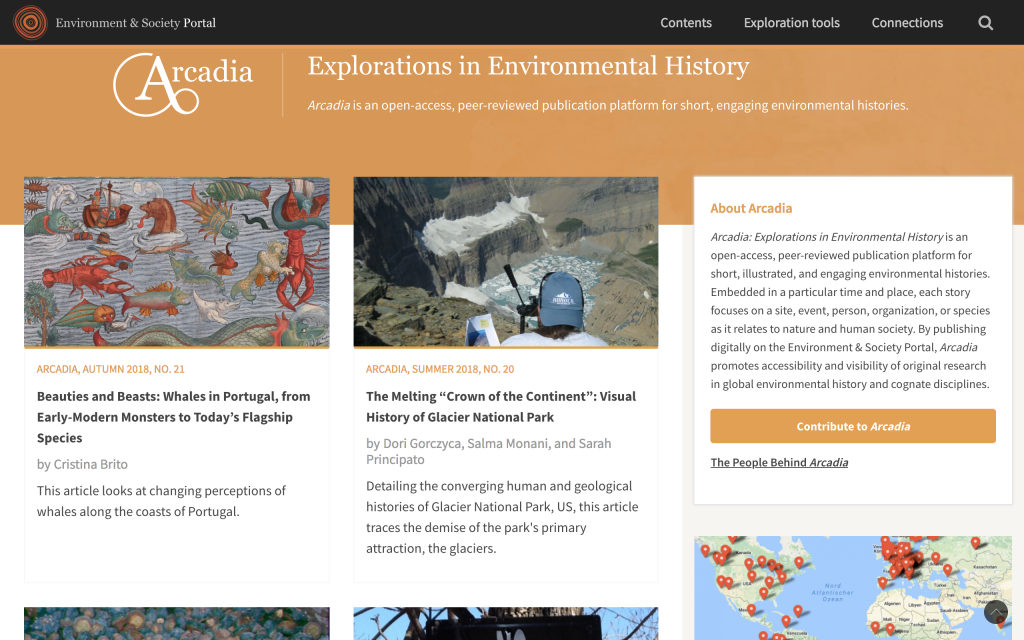
Spatial Humanities – Spatial humanities is an aspect of digital humanities that helps us understand human activity and how space defines the human experience.
- To further spatialize Arcadia and fit the project into this definition of spatial humanities, the articles that the markers on the map link to need to include more of the human experience, such as oral testimonies. These articles could also include regional maps to show other environmental events in the region, because environmental events are so often connected. It could also be further spatialized by putting the map front and center, instead of off to the side. Additional photos or videos of the region accompanying the text would also provide a clearer digital component. While our proposed definition is rather broad, we would not modify it. There are many ways to define spatial humanities, and it is also a field that is still working toward finding its own identity. Spatial humanities may be defined in different ways by different people and different fields, as we discussed in class.
- This website’s argument for being a spatial humanities project is implicit. The site uses rather simple and straightforward methods to present the data for different environmental events. There are few layers of depth to the project, and it does not reconstruct or demonstrate space in ways other than dots on a map and a couple photographs.
- The intention of the site is to promote accessibility and visibility of the relation of environmental histories to nature and human society through short publications, and provide short, engaging environmental histories for informed conversations on environmental events.
- The intended audience is the general public.
- The user interface has an overly simplistic appearance (very blog-style) that makes it difficult to see what all the website has to offer. To really get the full effect and scope of the information the site has to offer, you have to click on the map in the right-hand sidebar, which is hidden unless your internet browser window is fully expanded.
- We would like to see oral histories (for the more current events) to understand how the space that people occupy influenced their experiences through these environmental events, as well as a greater emphasis on the world map instead of blog posts. The map should be a more central component of the project. We would also like to see more maps included inside the blog posts.
- The site does include historical and spatial knowledge, but it emphasizes the historical aspect more than the spatial aspect. The site could focus more on the map to highlight how these environmental events are connected. However, as a historical site, Arcadia has many opportunities for improvement. Since history is based on people’s actions and reactions to their surroundings, Arcadia should include more personal testimonies, such as oral histories. The website fails to connect people to environmental history, which may be more indicative of the field than the website. Arcadia should be able to demonstrate the influence that people have on the environment, and vice versa.
